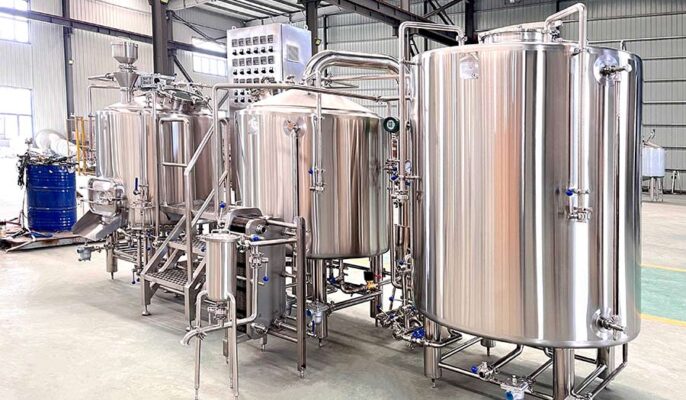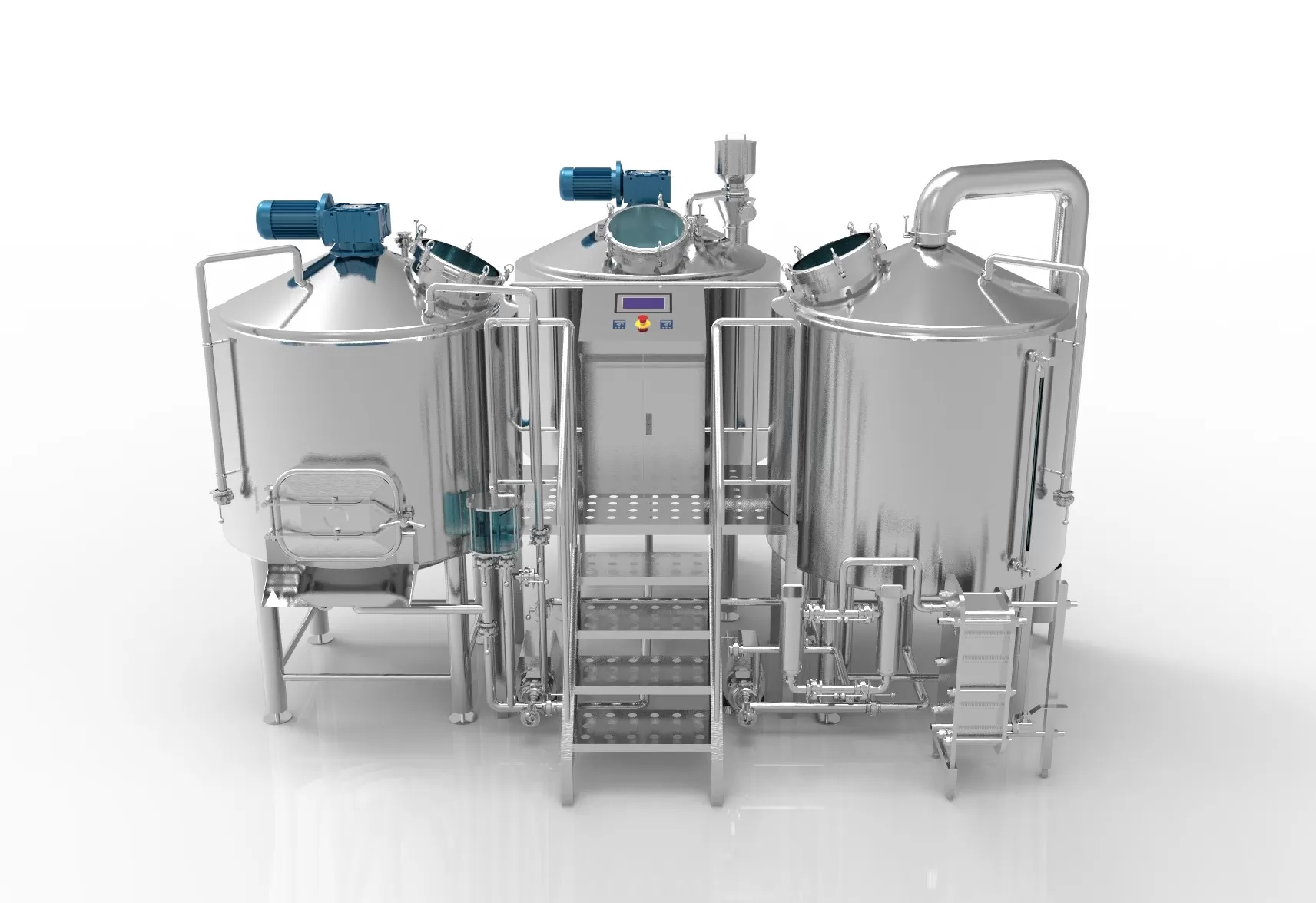Whether it’s home brewing or commercial brewing, there are big and small problems that can occur during the beer brewing process that can affect the quality of your beer. In this article, you can learn simple preventative measures to improve the quality of your beer.
Hygiene Problems
One of the most common problems in the brewing process, and one of the easiest to fix, is poor sanitation of brewing equipment. Contaminants can cause serious damage to the beer, leading to spoiled beer and potentially spoiled brew batches.
The first step in brewing beer is to clean the brewing equipment. Brewing is a very complex process, and keeping brewery equipment clean not only maintains the whole but also helps protect the quality and flavor of the beer.
Make sure to start by thoroughly sanitizing all brewing equipment, including fermenters, airlocks, and brewing utensils. Use brewing-specific sanitizers; cleanliness is key to preventing harmful microorganisms from compromising beer quality.
Note: There is an important difference between cleaning and sanitizing. Properly cleaning brewery equipment removes dirt, dust, and scum, as well as fats, proteins, and various sticky substances that can ruin the flavor of beer. Sanitizing does not affect any of the above but kills harmful bacteria in a way that cleaning alone cannot.

Using poor-quality water
Tap water straight from the tap in your area may be delicious, but when you add this water to your brew, it can hurt the beer. Unfiltered, chlorinated water can give beer a metallic and plastic flavor. The pH and ion distribution of water varies from region to region, which can change the final gravity, pH, and flavor of your beer.
With the growth of craft beer around the world, many of these beer styles are made around the type of water available in their region.
Your local tap water may not have the minerals or pH balance needed to produce the recipe you are using. You can use water treatment equipment to adjust the quality of your local water to ensure the flavor of your beer. Of course, you can also fine-tune your recipe to ensure that the minerals in your beer are balanced.
Slow fermentation of beer
This is one of the most common problems. After transferring the wort to the fermenter, it can take up to 6-8 hours to ferment. Please don’t panic if there are no signs of fermentation during this time, it’s normal. Fermentation is a critical stage where the yeast converts sugar into alcohol and produces carbon dioxide to complete the fermentation process in the fermenter. Sometimes the process can stall or take longer than expected, mainly due to insufficient yeast, yeast vigor, or incorrect temperature.
Reasons for slow or no fermentation:
- Insufficient amount of yeast. An insufficient amount of yeast can cause slow fermentation, simply put the right amount of yeast into the fermenter again to fix the problem.
- The wort temperature is too high. All yeast needs a proper temperature range to ferment. When the temperature is too high, the yeast may die. Only after the wort has cooled should it be transferred back to the fermenter for fermentation.
- The wort temperature is too low. When the temperature is too low, the yeast may stop working, resulting in a slow fermentation.
- The sanitizer in the fermenter does not need to be rinsed. Sanitizer residue can still kill the yeast and the fermenter needs to be rinsed after sanitizing to remove the sanitizer residue.
Temperature inconsistencies
Maintaining a constant temperature throughout the brewing process is critical to obtaining desired flavors and aromas and ensuring proper fermentation. Temperature fluctuations can cause yeast stress, which can alter flavor and lead to complications when the wort interacts with the yeast.
Purchase a reliable thermometer and closely monitor temperatures at each stage, including mashing, boiling, and fermentation.
To avoid problems brewing low-quality beer, the proper temperature should be between 45 and 72 degrees Fahrenheit, fine-tuned to the stage of the process. This is a crucial step, as fermentation takes weeks and the wrong temperature will put you almost back to square one in terms of progress.
Thin flavor and aroma
Mild flavors and aromas can diminish the quality of a beer, especially after the time and effort invested in brewing it. A variety of factors can contribute to these undesirable characteristics, such as poor yeast selection, overexposure to oxygen, bacterial contamination, or poor fermentation temperature control.
The flavor and aroma of a beer comes from a variety of ingredients such as grains and hops, as well as from the time spent fermenting in the fermenter. Following recipes, attention to detail, proper ingredient management, and timely processes will provide an accurate and consistent product. Understanding beer brewing will allow you to balance and achieve proper flavor by simply adjusting the quantity and quality of hops, grains, and yeast.
Understanding how to troubleshoot the beer brewing process will help you identify specific off-flavors or aromas and cross-reference them with common brewing problems. This will help you narrow down possible causes and take appropriate corrective action, whether it’s adjusting fermentation conditions, revisiting your sanitation practices, or exploring different yeast strains.
Carbonation Problems
Carbonation is another important aspect of beer, and carbonation problems can lead to over or under-carbonated beer. Over-carbonated beers will foam when poured, while under-carbonated beers will result in a flat, flavorless beer. The best way to prevent carbonation problems is to monitor carbonation levels and adjust them as needed.
To prevent these problems from occurring, make sure you measure accurately when adding sugar and consider using a carbonation calculator to calculate the exact amount. Patience is key when it comes to carbonation, as it can take weeks for a beer to fully carbonate; also, allow enough time for the process to complete before making adjustments.

Yeast health and inoculation rates
Ensuring that the yeast inoculum is healthy and at the proper rate is critical to successful fermentation. Proper yeast preparation (e.g., using a yeast starter for liquid yeast or rehydrating dry yeast) goes a long way toward achieving a robust fermentation.
Also, remember to add the right amount of yeast. This reduces the risk of stagnant or incomplete fermentation and ultimately brews a better-tasting beer.
In conclusion, focusing on sanitation, equipment maintenance, and yeast health can help prevent common problems in beer fermenteurs. By implementing these preventative measures, you will be able to consistently produce great-tasting homebrewed beer.
Other Frequently Asked Questions
Why is there slimy, crusty, or weird-looking stuff floating around in fermented beer?
For the amateur or first-time brewer, fermentation can be a very off-putting event with lots of weird sludge and clumps of condensation. 99.9% of the time, this is completely normal and is just the result of fermentation. Try not to worry about it and carry on as usual.
Is my beer infected?
Beer floats a lot during fermentation and this can be a cause for concern, especially if it was not present in your last brew and the first thing you should do is conclude that the beer is contaminated. This is completely wrong, in 99% of cases it is just a naturally occurring impurity from the normal fermentation process. Allow the beer to ferment normally and then proceed as usual and there is usually nothing to worry about.
Do I need to put my beer in a secondary fermenter?
In most cases no, you can leave the beer in the same fermentation vessel and bottle or keg it without a secondary fermentation. If the beer sits in the same vessel for 3 to 5 weeks there will be no off-flavors or problems, if it sits longer consider pouring it.




